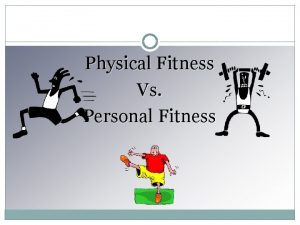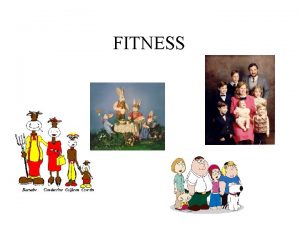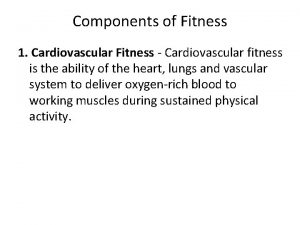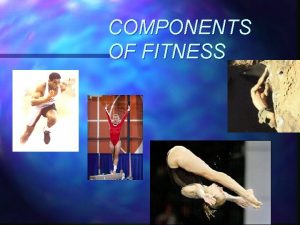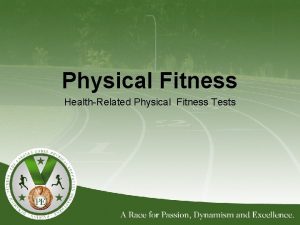Fitness Training Why Fitness Training Functional capacity improved












- Slides: 12

Fitness Training

Why Fitness Training? • Functional capacity: improved cardiac ability to accomplish common tasks • Sustainable endurance: improved ability to resist fatigue and enhance long-term work capacity • Healthy lifestyle enhancements: decline in health risks and increased life expectancy • Body image and weight: improved sense of satisfaction and appreciation of body size, shape and weight

Why Continued • Wellness: enhanced fitness levels, leading to optimal health • Disease prevention and recovery: lower risk of degenerative conditions and enhanced capacity for rehabilitation, resulting in more enjoyment of life

Training Zones

Heart Zones Facts • Fact 1: zones have size, each zone is a 10% increment of max heart rate • Fact 2: zones have structure, two parts: upper and lower zone • Fact 3: zones have dividing lines, they separate the different zones • Fact 4: zone names correspond with their benefits • Fact 5: zones have numbers, each represent intensity levels

Zone 1: The Healthy Heart Zone • Lowest intensity range- 50 -60% of max heart rate • Benefits: blood pressure lowers, cholesterol levels improve, body fat decreases or stabilizes, muscle mass increases • This zone is also a recovery zone after a strenuous workout and great for beginners • Calories burned: Fat as opposed to carbs (carbs burn in higher workload training zonesmakes you hungry) • About 5 calories per minute

Zone 2: The Temperate Zone • • • Moderate and comfortable zone 60 -70% of max heart rate 70 -85% of all calories burned come from fat 6 -10 calories burned per minute Burn more fat than in zone 1 and gain muscle mass • More muscle available to burn fat= more calories to be burned even when body is at rest

Zone 3: The Aerobic Zone • • 70 -80% of max heart rate Most benefits in the least amount of time Gets you fitter, faster and leaner Reaches aerobic capacity, which causes: -improved VO 2 -improved efficiency in movement -enhanced fat burning -strengthened joints -improved self-esteem -improved physical and emotional stamina

Zone 3 Continued • Zone 3 is the transition between the two health zones and the two performance zones • Will improve athletic conditioning

Zone 4: The Threshold Zone • 80 -90% of max heart rate • Anaerobic threshold- transfer from aerobic metabolism (with O 2) to anaerobic metabolism (without O 2) • O 2 debt occurs, causing rapid accumulation of lactate that contributes to muscles fatigue • Anaerobic system is a different energy system where O 2 is limited and lactic acid is produced, causing fatigue • Anaerobic threshold changes with fitness, higher anaerobic threshold, higher the fitness

Zone 5: The Red Line Zone • 90 -100% of maximum heart rate • Challenge zone: no one can spend long periods of time in this zone due to the exceedingly high demand for fuels in this zone • Body’s oxygen and glycogen needs exceed the body’s ability to deliver them

Lactic Acid? • Glucose converts to pyruvate (glycolysis) • When body has plenty of oxygen, pyruvate is shuttled to an aerobic pathway to be broken down for more energy • When O 2 is limited, pyruvate converts to lactate • Lactic acid causes the burning pain in the muscles that helps us prevent from overworking our muscles • Once we recover with O 2, pyruvate is converted back to glucose
 Andreas carlsson bye bye bye
Andreas carlsson bye bye bye Channel capacity planning
Channel capacity planning Workwell functional capacity evaluation
Workwell functional capacity evaluation Spirogram
Spirogram Normal dynamic compliance
Normal dynamic compliance Ideal requirements of space maintainers
Ideal requirements of space maintainers Functional and non functional plasma enzymes
Functional and non functional plasma enzymes Enzymes in plasma
Enzymes in plasma Functional and non functional
Functional and non functional Dont ask why why why
Dont ask why why why What is skill-related fitness? *
What is skill-related fitness? * Double gap sej drawing
Double gap sej drawing Howland current source
Howland current source
















